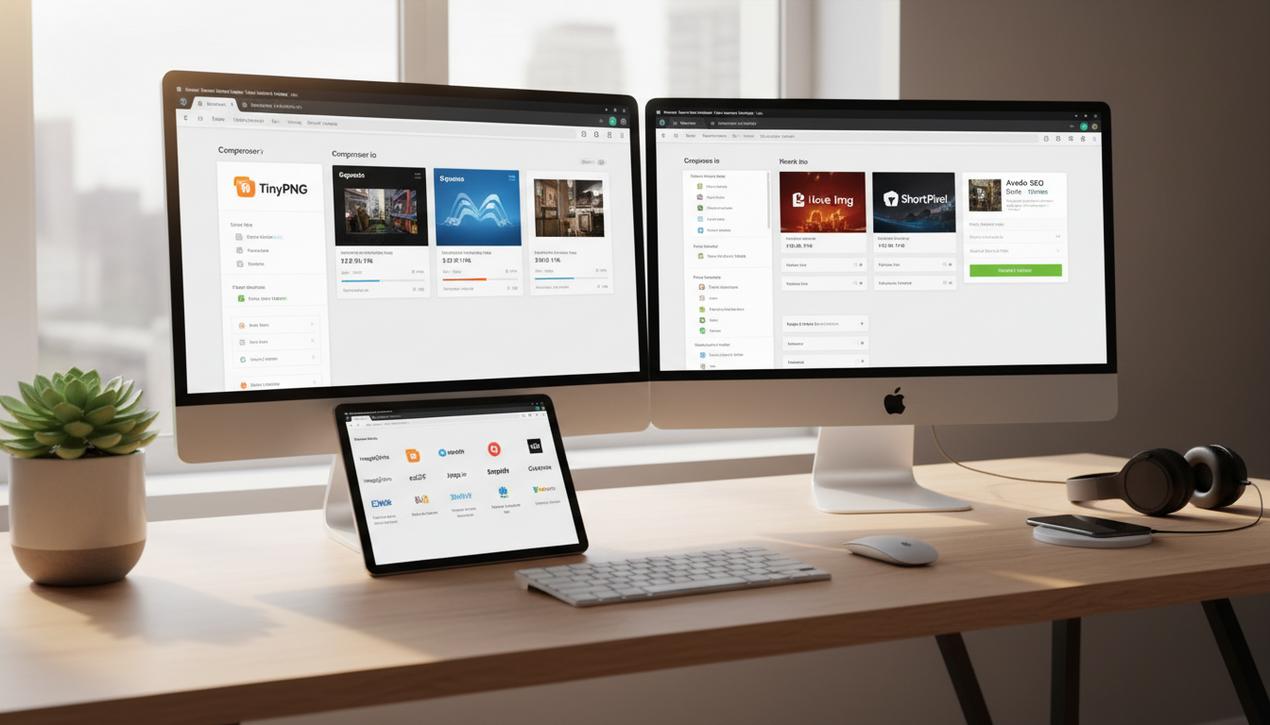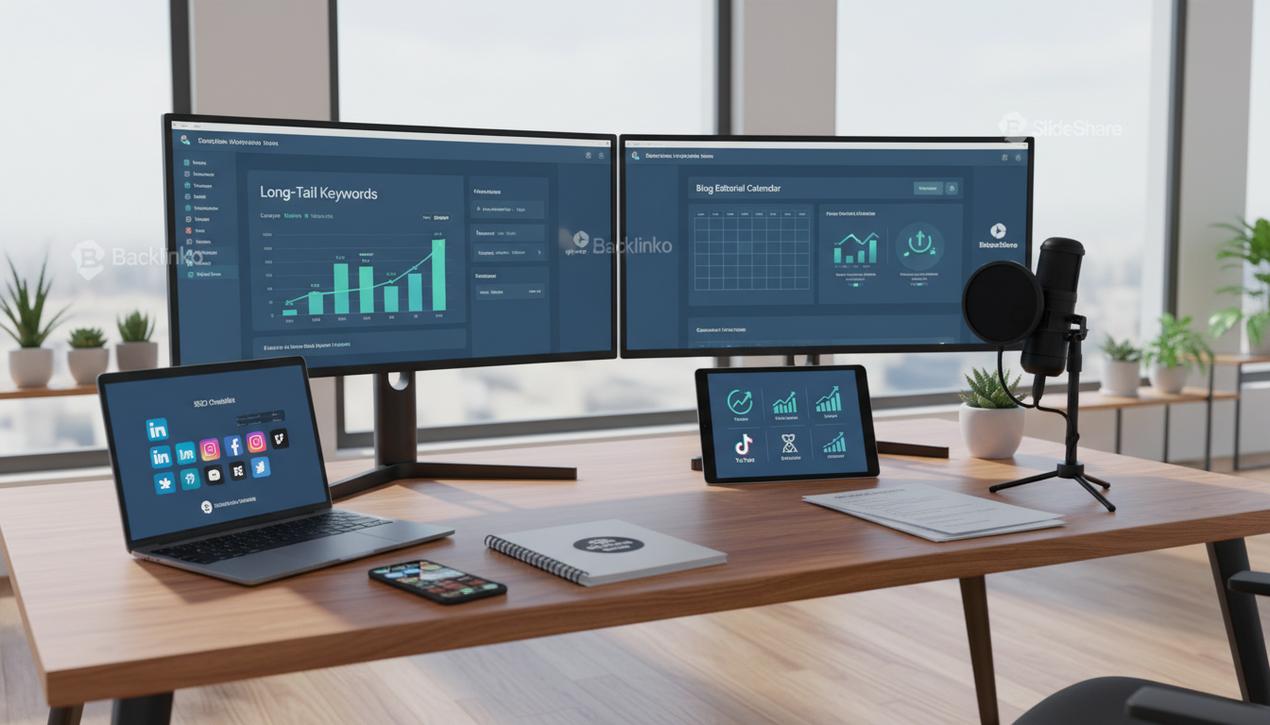Image Compression: 16 Top Tools for a Faster Website


In an era where over 60% of global web traffic originates from mobile devices, website loading speed is no longer a feature—it’s a fundamental necessity. Today’s internet users are notoriously impatient; a page that takes longer than 3 seconds to load will see its bounce rate skyrocket. Images are often the biggest culprit, accounting for more than half of a typical webpage’s total weight. Therefore, image optimization is the single most effective lever for improving your site’s performance. Faster load times directly impact user experience, conversion rates, and, crucially, your SEO rankings, all essential for how to increase your website traffic. The challenge lies in striking the perfect balance between minimal file size and impeccable visual quality. Fortunately, a host of powerful tools can help you compress images without sacrificing clarity. This guide presents 16 of the best solutions for 2025, from online services to CMS plugins, to make your site lighter and faster.
Why Image Optimization Is a Pillar of Modern Web Performance
Before diving into the tools, it’s essential to understand the multifaceted impact of image compression. This isn’t just a technical tweak; it’s a strategic decision that affects your entire online presence.
Direct Impact on User Experience (UX)
First impressions matter, and on the web, speed dictates that impression. A slow-loading site feels unprofessional and frustrating. Statistics consistently show that a one-second delay in page response can result in a 7% reduction in conversions. By optimizing your images, you provide a seamless and pleasant browsing experience, encouraging visitors to stay longer, engage more deeply with your content, and ultimately convert.
A Critical Factor for Search Engine Optimization (SEO)
Google has officially integrated page speed into its ranking algorithms. The Core Web Vitals are metrics that measure a page’s performance, and a key indicator, the Largest Contentful Paint (LCP), is directly tied to the time it takes for the largest visible element—often an image—to render. A site with well-compressed images loads faster, achieves a better LCP score, and is consequently favored by search engines, leading to better visibility.
Compression Basics: Lossy, Lossless, and Next-Gen Formats
To choose the right tool, you must understand the two main types of compression and the modern image formats that have emerged. Each method has its own use case.
Lossy Compression
Lossy compression reduces file size by permanently removing some image data, often in ways that are imperceptible to the human eye. This method can achieve very high compression ratios, often reducing file size by 80% or more. It is the ideal solution for photographs and complex images with many colors. While JPEG is the most common lossy format, modern formats like WebP and AVIF offer far superior performance.
Lossless Compression
Lossless compression reduces file size without any loss of quality. It works by efficiently reorganizing the image data, but the compression ratios are less dramatic. This is the perfect choice for logos, icons like those used when you create a new favicon, diagrams, and images containing text or large areas of solid color where every pixel is important. PNG and GIF are classic lossless formats.
The Future of Formats: WebP and AVIF
In 2025, it’s imperative to look beyond traditional JPEGs and PNGs. Next-generation formats are now supported by all modern browsers. WebP, developed by Google, offers an average of 30% better compression than JPEG at an equivalent quality. AVIF goes even further, producing files that can be up to 50% smaller than JPEGs while supporting better color depth and transparency.
The 10 Best Online Image Compression Tools
Accessible and often free, these browser-based tools are perfect for one-off tasks or for optimizing images before uploading them to your website.
- TinyPNG / TinyJPG: The undisputed classic. Its dead-simple drag-and-drop interface intelligently compresses PNG or JPG files, providing an excellent balance between quality and file size with zero configuration needed.
- Squoosh: A powerful, browser-based tool from Google that acts as a veritable optimization lab. It allows you to not only compress but also resize, switch formats (including WebP and AVIF), and compare the original and compressed images side-by-side with a slider.
- Compressor.io: A highly versatile tool that supports JPEG, PNG, GIF, and SVG formats. It offers both lossy and lossless compression and can achieve file size reductions of up to 90%.
- Kraken.io: A professional-grade tool offering an “Expert” mode for granular control over compression settings. It also provides an API for developers looking to automate their image optimization workflow.
- Optimizilla: Allows you to batch-process up to 20 images at once. Its key feature is a quality slider that lets you preview and manually adjust the compression level for each image before downloading.
- I Love Img: More than just a compressor, this is a full suite of image editing tools. You can also resize, crop, convert formats, and even add watermarks to your images.
- ShortPixel (Online Version): The web-based version of the popular plugin, it offers three compression levels (Lossy, Glossy, Lossless) to suit any need. Its algorithm is renowned for its efficiency.
- ImageOptim: This tool focuses on lossless compression by stripping out unnecessary metadata (like EXIF data from cameras) to reduce file size without altering a single pixel of the image.
- ezGIF: The go-to specialist for animated GIFs. It can reduce a GIF’s file size by optimizing its color palette, removing frames, or reducing its dimensions, which is essential for web performance.
- Jpeg.io: A simple yet effective tool that accepts a wide variety of input formats (PNG, GIF, SVG, etc.) and converts them all into highly optimized JPEGs, perfect for standardizing a batch of photos.
The 6 Best Image Optimization Plugins for WordPress
For WordPress users, automation is key. These plugins optimize your images on upload and can even process your entire existing media library in bulk.
- Imagify: Developed by the team behind the WP Rocket caching plugin, Imagify is both powerful and user-friendly. It offers three compression levels, automatic WebP conversion, and keeps a backup of your original images.
- ShortPixel Image Optimizer: A community favorite known for being lightweight and highly effective. It provides superior compression (Lossy, Glossy, Lossless) and can convert images to both WebP and AVIF formats. Its free plan is generous.
- Smush: With millions of active installations, Smush is a reliable choice. It offers lossless compression, lazy loading (which defers the loading of off-screen images), and incorrect-size image detection, all automatically.
- EWWW Image Optimizer: A robust solution that performs compression directly on your own server, unlike others that use external servers. This can be a significant advantage for privacy-focused websites.
- Optimole: This is more than just a compressor; it’s a full real-time image optimization service. It compresses images, serves them from a fast global CDN, and delivers the perfect image size based on the visitor’s screen.
- Converter for Media: This plugin does one thing perfectly: it converts your existing media library to next-gen WebP or AVIF formats on the fly without altering the original files, delivering a dramatic speed boost.
Solutions for Other Platforms (Shopify, PrestaShop)
If you aren’t using WordPress, equally effective solutions are available. The goal remains the same: automate optimization to save time and ensure consistent performance.
For Shopify
The Shopify App Store is filled with dedicated image optimization apps. Tools like Avada SEO Suite or Crush.pics integrate seamlessly with your store, automatically compressing all product images. They also handle file renaming and ALT text optimization for a complete SEO solution.
For PrestaShop and Other CMS
For e-commerce platforms like PrestaShop or Magento, the best approach is often to leverage a Content Delivery Network (CDN) with built-in optimization features. Services like Cloudflare, StackPath, or Imgix not only distribute your content globally but also perform on-the-fly image optimization. They can compress, resize, and convert your images to WebP/AVIF format automatically, taking the load completely off your server.
Image optimization is no longer a technical afterthought but a fundamental requirement for any successful website, especially if you plan to create a one-page website in 2025. Whether you opt for an online tool for occasional use, a plugin to automate the process on your CMS, or a CDN for an all-encompassing solution, the objective is constant: to provide a fast, enjoyable experience for your visitors. By adopting the right tools and embracing next-generation formats, you will not only improve your conversion rates but also enhance your visibility in search engine results.




